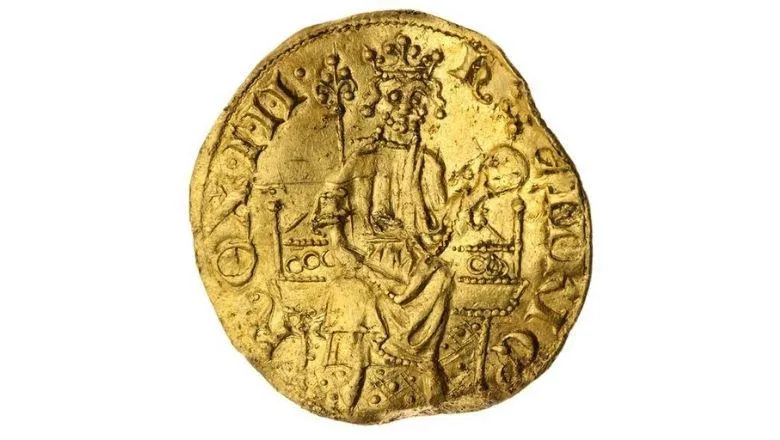This is one of the most exciting and extraordinary numismatic finds. Whatever the truth here, this rare and beautiful coin from the reign of Henry III has probably lain in its field at Heymock for over 760 years. How lucky that is has now been brought to light.
Professor David Carpenter, Professor of Medieval History at King’s College London
23 January 2022
New analysis reveals origins of England's earliest coin
New analysis and research from King’s College London and led by Professor David Carpenter has confirmed what is believed to be one of England's earliest gold coins, dating back 765 years ago. The coin sold at auction with a realised price of £648,000 making it the most valuable single coin find ever made in British soil and the most expensive English medieval coin ever sold at auction.

The rare King Henry III coin, which is just under an inch in diameter, was minted in about 1257 by William of Gloucester with gold imported from North Africa. Only eight of the coins are known to exist, almost all of them in museums and is the first of its kind found in 260 years.
The chance discovery was made by an amateur metal detectorist in Heymyock, Devon who was unaware of the rarity of the coin and posted a picture online.
Auctioneer Spink & Son approached Professor Carpenter, who is a leading authority on the history of Britain in the central middle ages, to not only verify the authenticity of the coin but to answer the questions raised through its discovery, such as why did Henry mint this coinage and crucially how did one of the coins end up at Hemyock?

Through his expert analysis, Professor Carpenter revealed that Henry’s gold coins were minted from a treasure he had personally accumulated during the 1240s and 1250s when he demanded that all payments be made in gold to build up funding for overseas projects. His analysis also revealed that roughly 80,000 coins were minted and he was ultimately forced to use this personal treasure to mount a campaign against the growing threat of Llywelyn ap Gruffudd, the last Welsh Prince of Wales across Offa’s Dyke.
Professor Carpenter was able to explain why one of the coins was discovered in the Devon field by tracing it back John de Hidon, the lord of Hemyock Manor, who helped to finance Henry VIII’s personal gold accumulation. He may have come into its possession during Henry’s campaign in Wales which John participated. Professor Carpenter suggests that the coin may have fallen from the pocket of de Hidon himself, or one of his labourers.

Henry broke almost entirely with convention on the design of the coin which features the first portrait of a King upon the English throne since the time of William the Conqueror, who ruled from 1066 to 1087. This was also the first time the economy had not relied on silver coins since the dark ages.

